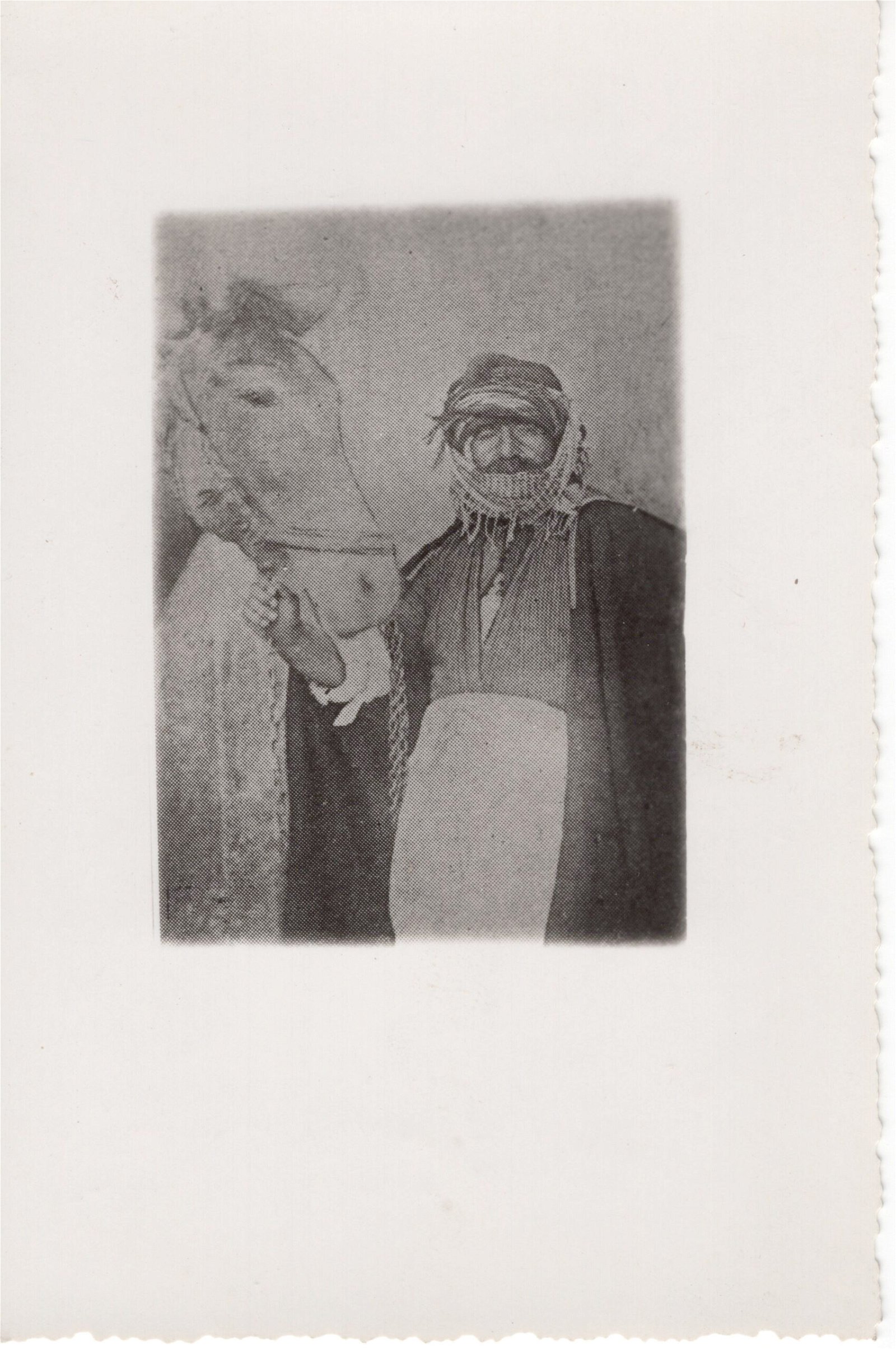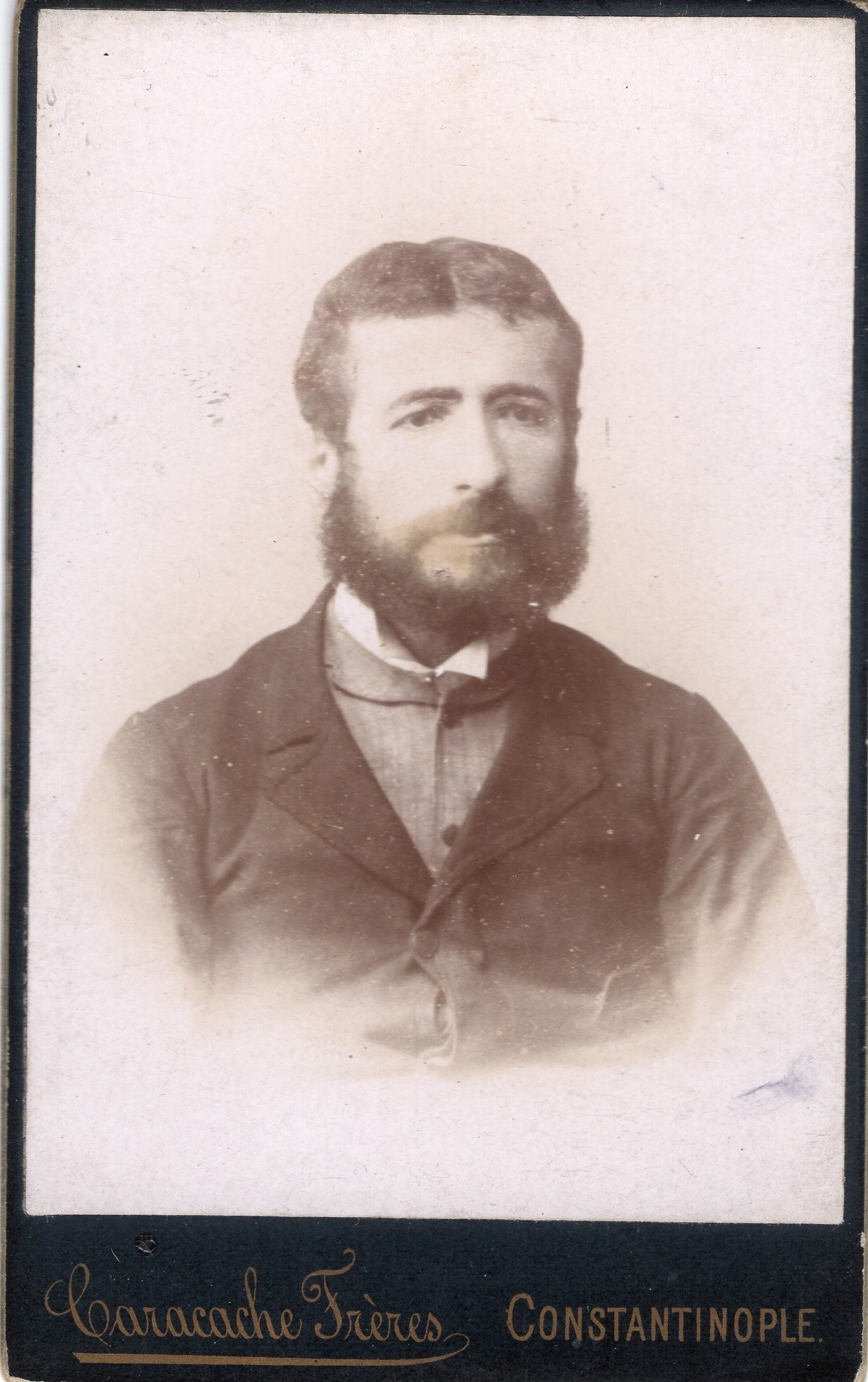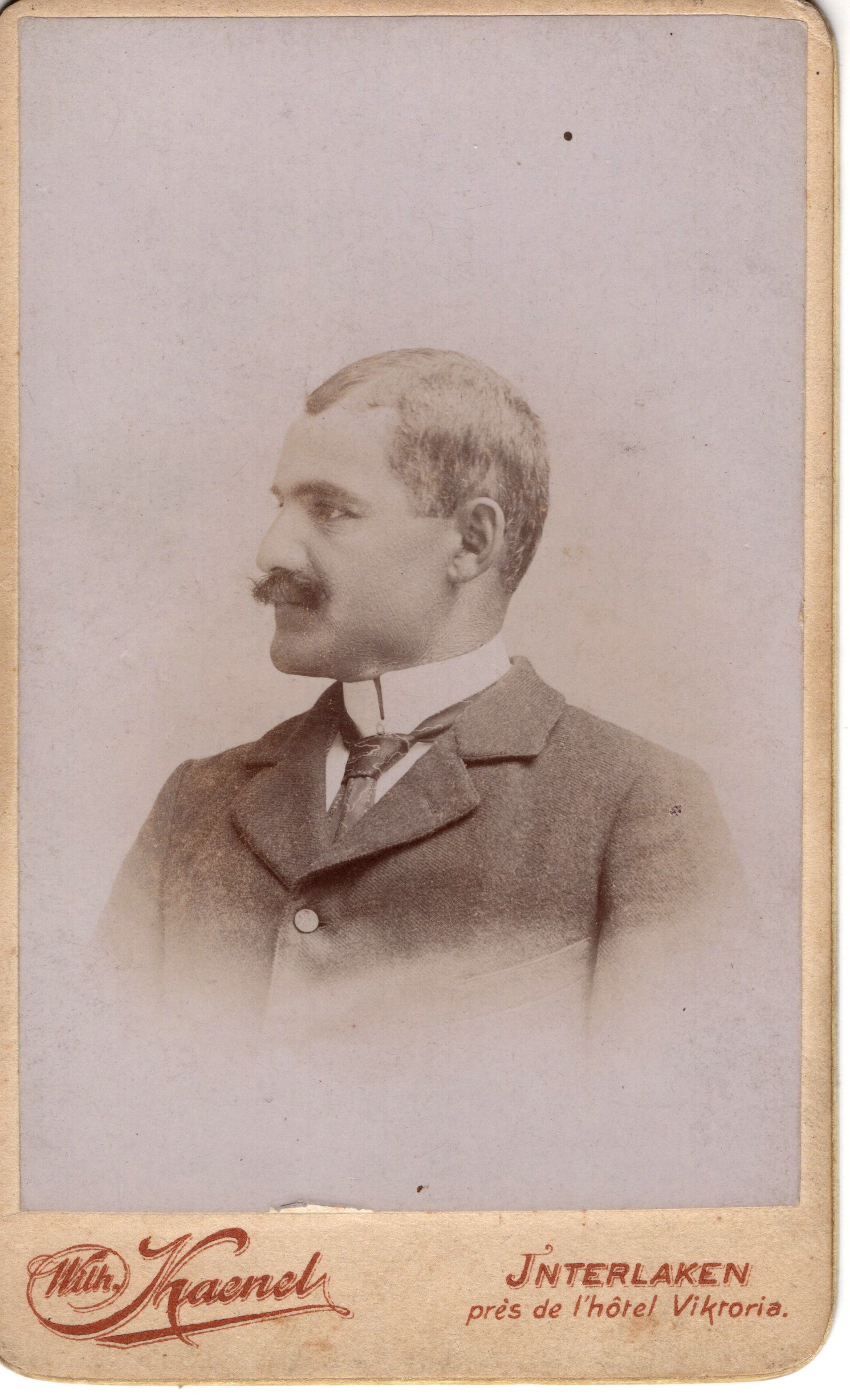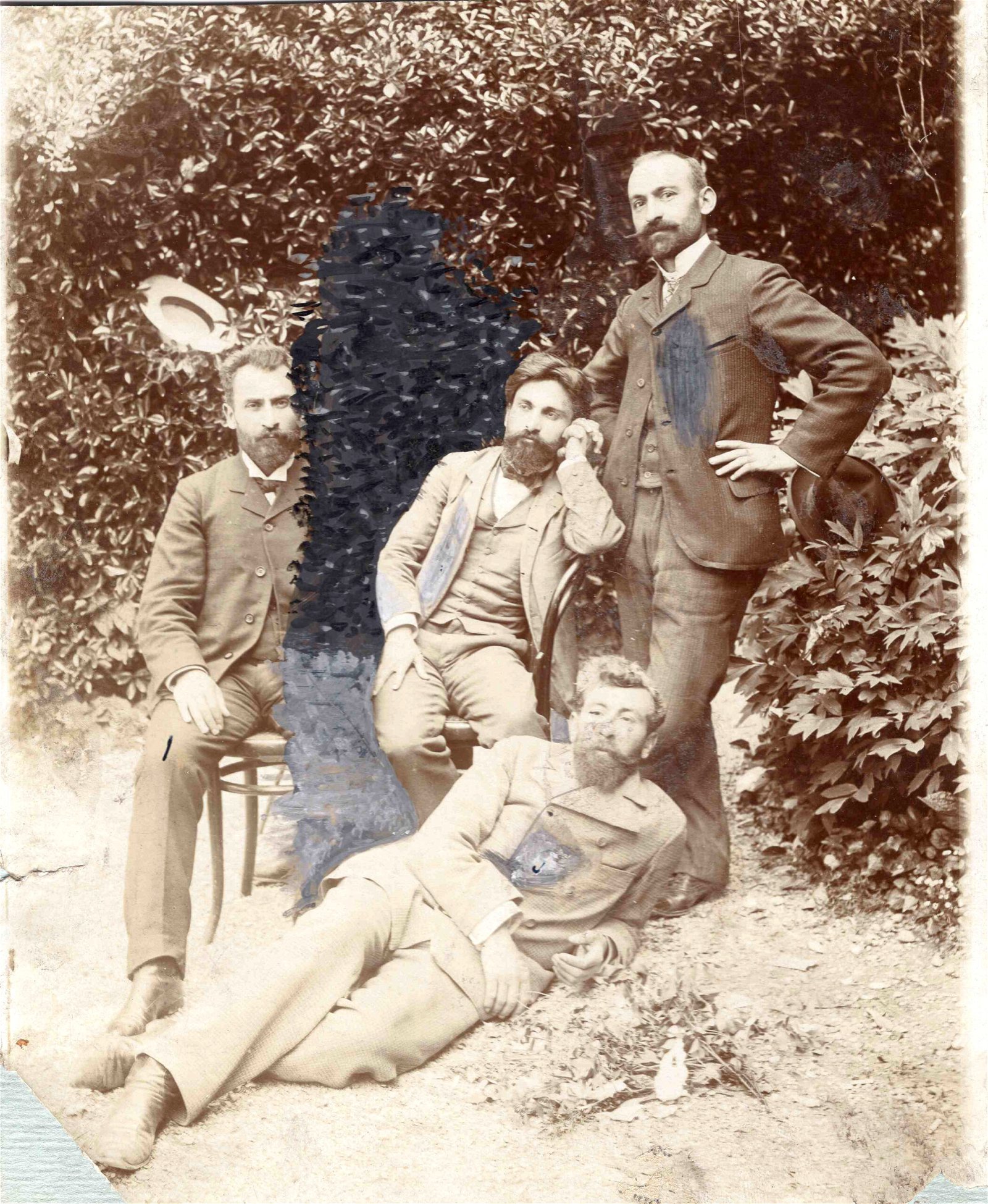There is a lot that could be said and written about the ARF photo archives, which I have had the privilege and pleasure of sorting through over the course of the autumn and winter of 2023 and into 2024. Having already directed your gaze to a few concrete glimpses through the pages of the Weekly – whether more on the solemn or amusing side, or just pointing out a piece of history – this article shares a mixed bag of highlights from the collection which caught my eye.
Do you remember the Gougounian Expedition from the previous glimpse? Well, one of its members had a remarkable life story.

Stepan Stepanian – also known as Balajan – was originally from Yerevan. As a result of his participation in the failed raid led by Gougounian, he was exiled for 15 years to the island of Sakhalin in the far east, beyond Siberia. Stepanian and some comrades escaped from there on a raft and ended up in Japan. He later spent time in India and Egypt before finally returning to the Caucasus. By 1896, he was based in Iran. Among his many talents, Balajan was a photographer – he documented numerous Armenian-populated regions of the Ottoman Empire.
According to the caption of the picture above, that is Balajan Stepan in disguise. At one point, as Russian forces moved into Iran, he had to flee, as he was still wanted by the Romanov authorities. Why take a picture of yourself in a secret disguise, it does not say. This was far before the era of instant digital imagery, so it is safe to say that no police or border guards would find out about the disguise. Maybe it was just out of a sense of defiance, or even of fun. Or maybe it was a photograph taken later, with the disguise recreated, as a picture of triumph.
Next, we have a pair of unique pictures.


They are not so much unique in what they portray, as the information noted on them. Tovmas Atamian, above, is described simply as an American who embezzled 25 gold (liras?) from the ARF and ran away from Constantinople. Below him, Garabed Nersesian’s story is more complicated, as the back of his photo attests.

It says he is from the village of Gamis, near Sepasdia. He is a butcher (“barber” is crossed out and corrected), and apparently applied from Interlaken (Switzerland) as well as Berlin to go to Armenia to fight. It says to see his letter from November (?) 16, 1901.
(Note that, at that time, “Hayastan” or “Armenia” could mean the places Armenians lived – mostly referring to the Ottoman Empire, also called the “Yergir” or land – and not what became the Republic of Armenia later.)
A different handwriting, signed Ghazaros, notes below on September 26, 1903: beware of being fooled by this man! He took 100 francs from me to go to the Yergir and did not do so.
These two photos are, on the one hand, a bit amusing, but also bring us down to earth. When we think about that generation of activists, public figures, armed men (and women) and so on, we rightfully admire them and celebrate their efforts. But we should also be aware that many frustrations in public life or political circles we experience in our own time were not that different back then either.

This picture is more remarkable still. I owe an immense debt of gratitude to a colleague in Yerevan for information on it – and on many of the images of the ARF photo archives, in fact. The catalog would be less complete were it not for the numerous contributions by historian and researcher Mikle Babayan.
At the courtyard of the Troshag building in Geneva, we find four notable names and faces from the era – and one person, Simon Hagopian, doctored out of the photo. Notice how the space between the seated persons has odd coloration. Part of the person on the left is sort of distorted and “eaten up” too.
Hagopian had a career as an educator alongside being an active member of the ARF. However, he had disagreements with the party and left it in 1920. He moved to the young Soviet Armenia a few years later, where he took on work as an instructor at the university in Yerevan. As with many such cases, Hagopian faced repression as a former Tashnag during the 1930s. He died in a Soviet prison, being officially rehabilitated after the end of Stalin’s rule.

You can find a whole series of photographs at arfarchives.org/photograph featuring actors dressed up for roles. Above is a particularly significant example.
It features Arshavir Shahkhatouni, or Acho Chakatouny, who is yet another individual from the turn of the 20th century whose life story is well worth a biopic in itself. He was from a theatrical family and came into his own during a time when the cinema was still new, starting out on the stage in Baku, Alexandropol (Gyumri) and Tiflis (Tbilisi) before transitioning to the screen in Moscow and Paris. In between, he fought for the Romanov Empire during the First World War and served as the military commander of Yerevan during Armenia’s independence.
Speaking of biopics – a film showcasing Napoleon Bonaparte’s life made a splash in 2023. But Napoléon from 1927, directed by Abel Gance, was among the earliest movie representations of that historical figure. It is considered a landmark in epic cinema. The picture above is a still from that very movie, featuring Shahkhatouni in the role of Pozzo di Borgo, an antagonistic figure. (That 1927 production had at least one other Armenian in the cast – Max Maxudian, who played Paul Barras.)
As you can see, the ARF photo archives offer a variety of images reflecting the diverse paths taken by Armenian individuals, communities and the nation as a whole over the past century and more. Many of the pictures have a direct tie with the Armenian Revolutionary Federation and its activities. Many others offer glimpses into all kinds of Armenian life and times, capturing moments, people, places and events that form a part of our collective story.


Pashinyan and his gang who rule Armenia today…
look like they came out of a comedy movie
video :https://twitter.com/i/status/1778279237478171050
I appreciated Nareg Seferian recognize the contribution of a fellow researcher from Yerevan and note: “I owe an immense debt of gratitude to a colleague in Yerevan for information on it – and on many of the images of the ARF photo archives, in fact. The catalog would be less complete were it not for the numerous contributions by historian and researcher Mikle Babayan.” Mikle Babayan is the author of Author of the bilingual “Commemorative Book of Independence: Statesmen of the Republic of Armenia 1918-1921”. I have found Mikle Babayan’s knowledge of the first Republic of Armenia encyclopedic. I am glad to read of such cooperation for structuring and giving substance to the ARF photo archives